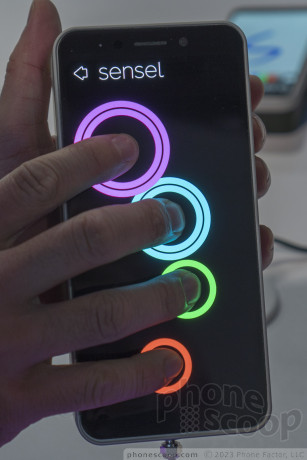New Pressure-Sensitive Touch Panel Tech Pairs Well with Flexible Displays
Jan 10, 2019, 11:39 AM by Rich Brome @richbrome
updated Jan 10, 2019, 11:53 AM

There's a new touch panel technology in town, and it's coming to next year's phones with flexible displays. Sensel makes touch panels that have the precision and multi-touch capability of today's capacitive touch technology, but are better suited to the flexible displays coming to phones this year and next. Sensel touch panels can can measure the amount of pressure applied, and work perfectly underwater. Sensel is working with two different companies to launch phones with this technology in 2020, one with a bending display, and one with a fixed, curved display.
source: Sensel
I checked out a demo device and the technology works as advertised.
It does require some pressure to activate; right now about 2 grams, but the company expects to get that down to 1g very soon. That is a very small amount of pressure. Even on the demo device with 2g sensitivity, almost all of my light touches registered. I had to really try to getting a touch to not register. But it was possible. That means it may take a little adjustment if you're used to using the very lightest touch when you swipe the screen.
However, the ability to measure pressure has a distinct advantage: that makes it much easier for a phone to reject unintentional taps and swipes on secondary displays that, say, wrap around the sides and back of a phone. Using this technology, the whole phone — even the sides — can be touchscreen. The right software paired with this panel can tell when you're trying to interact with the sides or back, versus simply holding the phone.
Check out this video to see Sensel tech in action:
Comments
No messages


 Samsung Refreshes Galaxy S Series with S Pen, New Cameras
Samsung Refreshes Galaxy S Series with S Pen, New Cameras
 Samsung Refines its Foldable Phones
Samsung Refines its Foldable Phones
 Samsung Upgrades its Wearables
Samsung Upgrades its Wearables
 iPhone 14 Plus Offers a Big Screen For Less
iPhone 14 Plus Offers a Big Screen For Less
 Snapdragon 8 Gen 2 Redefines AI in Flagship Phones
Snapdragon 8 Gen 2 Redefines AI in Flagship Phones

